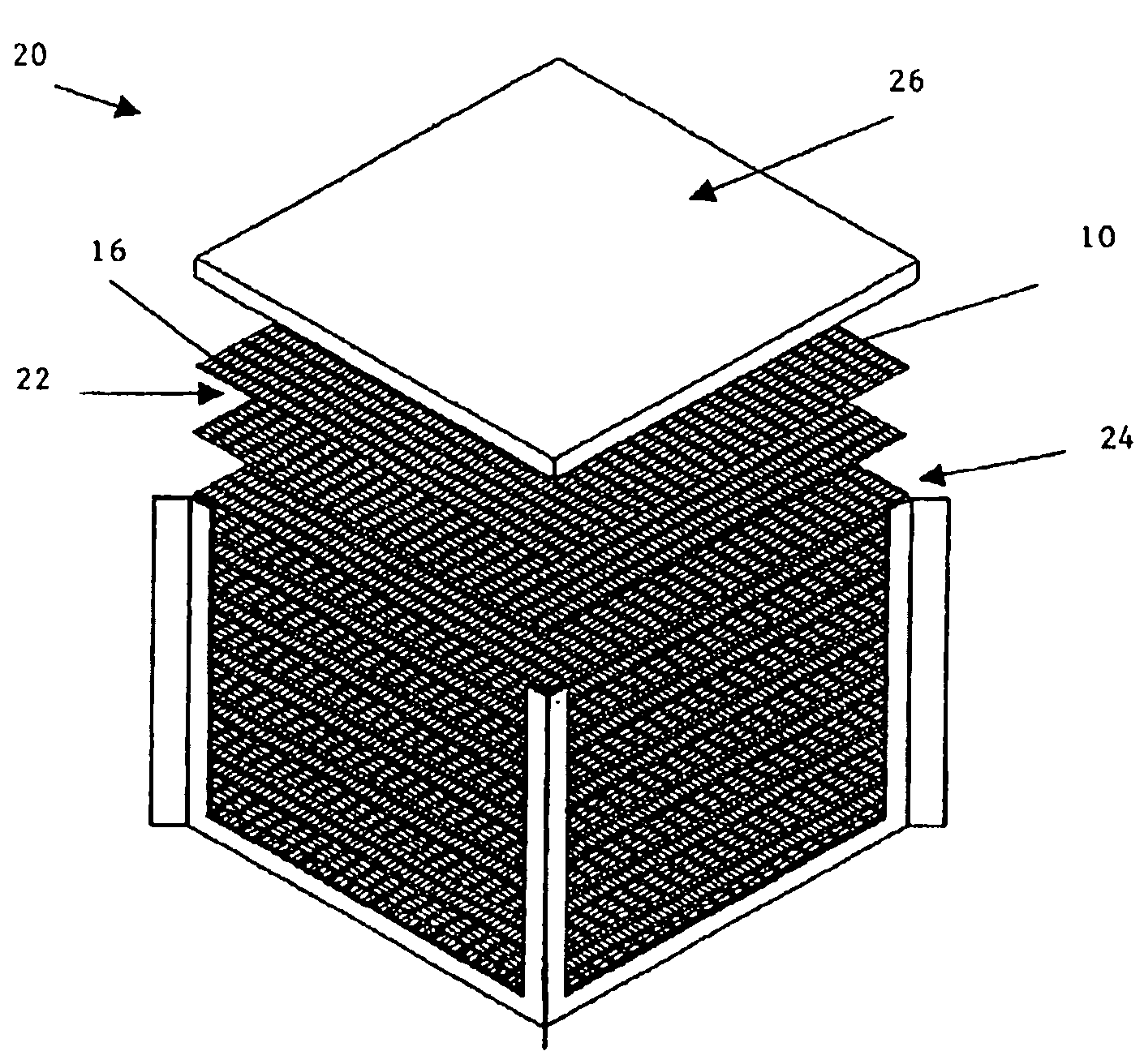Crosslinked polymer electrolyte membranes for heat, ion and moisture exchange devices
a technology of crosslinked polymer and electrolyte, which is applied in the direction of non-metal conductors, plastic/resin/waxes insulators, conductors, etc., can solve the problems of slow exchange or transport of water or some other highly polar liquid or gas between streams, and the rate limitation of exchange or transport of water or some other highly polar liquid or gas
- Summary
- Abstract
- Description
- Claims
- Application Information
AI Technical Summary
Benefits of technology
Problems solved by technology
Method used
Image
Examples
Embodiment Construction
[0008]FIG. 1 shows a single hydrophilic organic-inorganic hybrid membrane 10 for use in a humidity exchange cell according to the present invention. The membrane includes a continuous film of a humidity-conducting polymer 12 bonded to a reinforcing substrate 14 in the form of a cross-laid mesh or netting. Reinforcing substrate 14 strengthens the membrane so it can be handled, and allows the membrane to withstand pressure differentials without deflecting. As shown in FIG. 1, there are spacers, ribs or ridges 16 adhered to the surface of membrane 10 and running in one direction. The other side of the membrane is a smooth surface of humidity-conducting polymer 12. The height of spacer 16 sets the layer-to-layer spacing. Air channels in the humidity exchange cell are formed by spacers 16 when they rest against the smooth surface of the membrane that is placed on top of it.
[0009]The humidity-conducting polymer is preferably an organic-inorganic hybrid. In these hybrid materials, the orga...
PUM
| Property | Measurement | Unit |
|---|---|---|
| weight percent | aaaaa | aaaaa |
| weight percent | aaaaa | aaaaa |
| weight percent | aaaaa | aaaaa |
Abstract
Description
Claims
Application Information
 Login to View More
Login to View More - R&D
- Intellectual Property
- Life Sciences
- Materials
- Tech Scout
- Unparalleled Data Quality
- Higher Quality Content
- 60% Fewer Hallucinations
Browse by: Latest US Patents, China's latest patents, Technical Efficacy Thesaurus, Application Domain, Technology Topic, Popular Technical Reports.
© 2025 PatSnap. All rights reserved.Legal|Privacy policy|Modern Slavery Act Transparency Statement|Sitemap|About US| Contact US: help@patsnap.com



